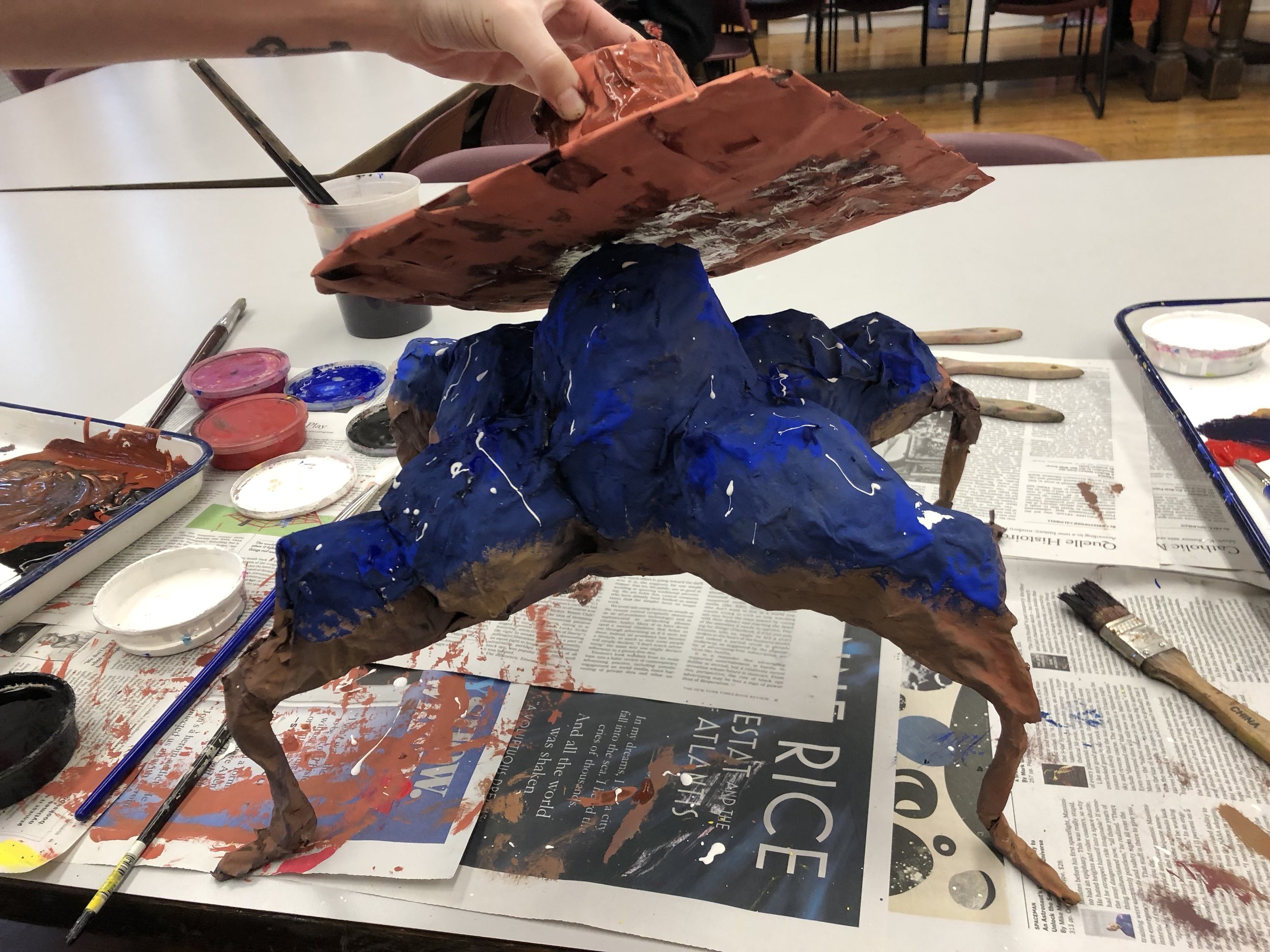Class Notes:
When we began class, we spoke about what paper mâché is and what it's characteristics are. Our teacher first showed us some artists that use paper mâché in their work, as well as student work. Two of the artists that we were introduced to were, Mark Bradford and Red Grooms. Both artists use sculpture and paper in their work.
We also talked about how it is not only describing the material but also the way that the paper is bonded when it is used. If something is made out of paper mâché, the user must start by making an armature for the paper to be laid on top of. The paper that is used to lay on top of the armature has to be matte news paper, otherwise the material will not stick with the adhesive. This will make the product have a matte finish, but a sealant can be applied if the artist wanted to make the sculpture shine.
We learned that people should be cautious when using the material because some students could have an allergic reaction with the paste used to lay the paper down. Another cautionary when using the paste is to not pour it down a drain. Since the material is an adhesive, the paste will clog and ruin the pipes. Below are pictures of the various kinds of paste that could be used in paper mâché. The one that we used for class was the Wheat Paste Powder. When using that kind, you must figure out a good ratio to mix the powder with water to find a good consistency. It is also good to mix the power as much as possible so that there are not as many visible chunks of paste.
The material is also good for students because it can be done with inexpensive materials. Students can use found objects as molds or find cheap materials to decorate the structure with. The process of making the armature, the adhesive, and the news paper strips is a physical and sensory experience that students will enjoy. The exception to this is if a student is hyper sensitive to some materials, in which case, they can wear gloves to make the process less stimulating for them. This process is also good for students because it can be a long one. The students will be able to take their time exploring the material, planning out their sculpture, and making their piece. Even after the piece is made, students can decorate it with other materials. Students can paint their sculpture with base white acrylic paint (gesso), wait for it to dry, then paint with tempra and other details over it. They can also apply yarn or fabric to the outside of the sculpture. This can incorporate various skills for students to practice and activities that some students like over others.
Homework:
Once we learned about the process of paper mâché, we were assigned to make a structure or animal that can touch the surface of a table in three points. I was paired with Courtney to complete the assignment. We combined our ideas of creating an abstract sculpture and recreating the wire-like legs of a figure in a movie. Because of the nature of the material, our project morphed into a structure that we call, "the Lone Survivor." We called it this because it takes the form of a cowboy-alien, and the material is also weighted down in a certain area, which sparked the idea of our figure being a survivor since it stands up.
Below are pictures of our process and product:




Class Notes:
During the next class, we had time to finish painting our projects. My team decided to paint our figure the colors that we thought the environment would look like where it could reside. Since the piece reminded us of an alien cowboy scene, we decided to paint a scene with rocks and dirt hills with a sparkling night sky. This way, our piece has represented how the material, paper mâché has completely controlled the direction that our subject took.
Our class also talked about the processes that each group took in their project. It was clear that we each had a different method for approaching the project. The other two groups had ideas going into the project and were, for the most part, able to carry out their vision. One team decided to create a flamingo with an umbrella, another chose to create a lobster. The flamingo group carried out their vision to how they wanted. The other team was influenced by the nature of the material and created two parts, one was a lobster and the other was a lady bug. After making the pieces for the lobster, they had realize that because of the nature of the material, they had two pieces to work with instead of one subject. After this exploration, it is clear that paper mâché is a material that takes some time to explore and understand how it reacts to actions taken to it. I anticipate that many students', when working with this material, subjects will be determined by the nature of the material.
Below are pictures of my classmates processes and completed projects:







